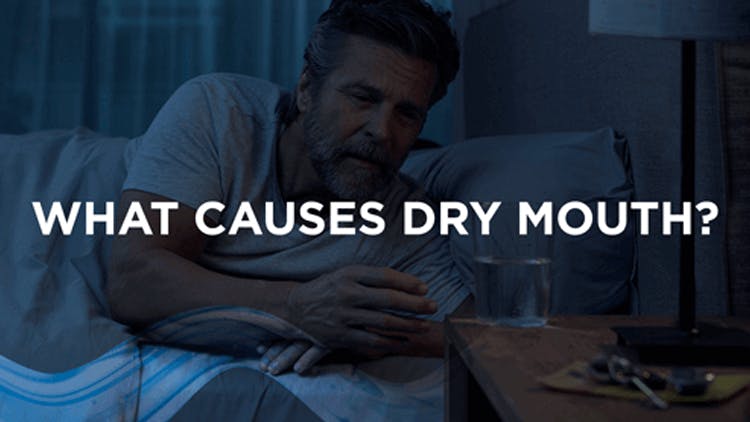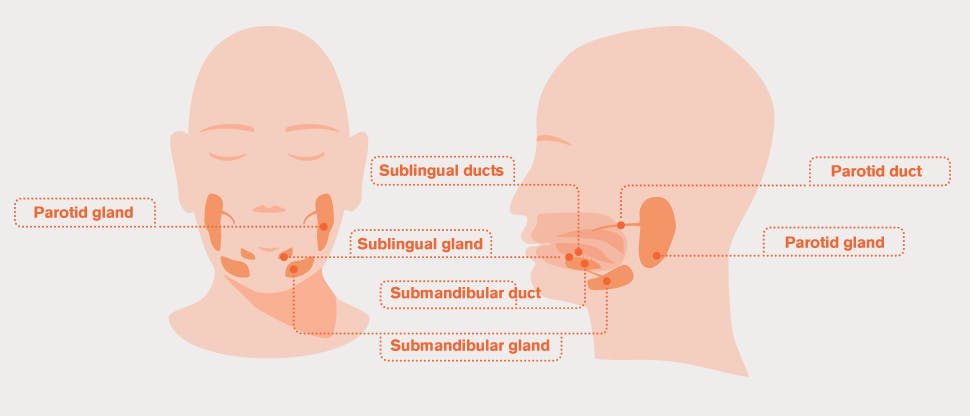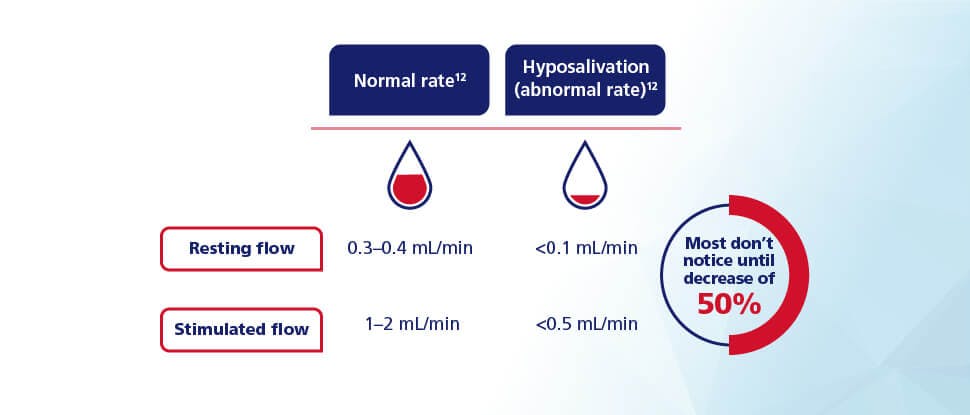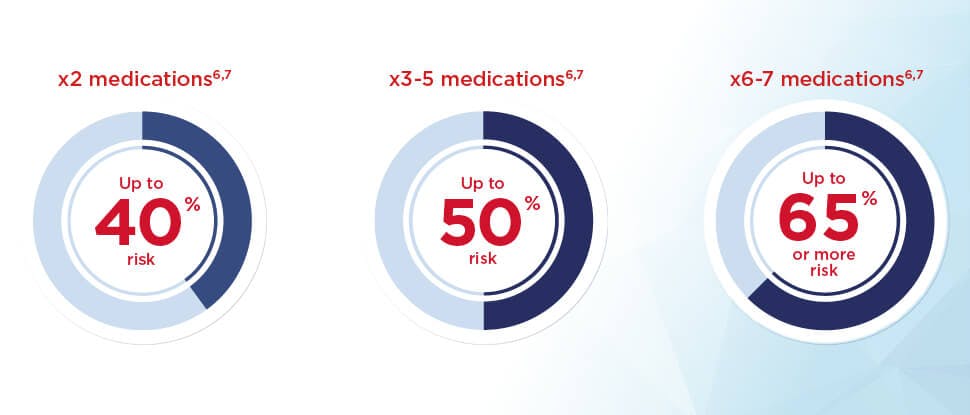Dry Mouth Causes

Recognizing the Underlying Causes of Dry Mouth in your Patients
Although medication is the most common cause of dry mouth1, other causes can lead to reduced saliva flow.
The Causes of Dry Mouth
Medication and Disease: The 2 main culprits of Dry Mouth2
- Medication is the number one cause1,3,4 of Dry Mouth as it is a side effect of many common medicines5 including antihistamines, antidepressants, diuretics, and sedatives.5
- Taking multiple medications may increase the risk of Dry Mouth by at least 40%6,7
- The medical conditions and comorbidities leading to xerostomia are diverse. They include Parkinson’s disease, anxiety and depression, rheumatoid arthritis, scleroderma, head and neck radiation and chemotherapy cancer treatments1,8
Patients with chronic diseases such as Sjögren’s syndrome and diabetes may not realize they have problems because the change in salivary production occurs gradually over time, resulting in slow-to-emerge symptoms.5
Failing to address may increase risk/likelihood of bad breath, mouth infections and cavities. Many of these oral health problems can be addressed by effectively managing Dry Mouth symptoms.1
Salivary Gland Hypofunction
Dry Mouth is associated with changes in saliva composition and may have no immediately identifiable cause.1,10 Salivary gland hypofunction – the objective measurement of reduced salivary flow – can be associated with:1,5,11
- Medical treatments and polypharmacy
- Lifestyle choices
- Health conditions
- Damage to the salivary glands

Salivary Gland Physiology
Three main salivary glands; paratoid, submandibular and sublingual produce 90% of saliva.1 These glands produce the two major types of secretion that form saliva:1
- Serous fluid (mainly from the parotid and submandibular glands)
- Mucous (mainly from the submandibular and sublingual glands)
The Different Causes of Dry Mouth
Offer Your Dry Mouth Patients a Solution That Suits Their Different Needs, Around the Clock*
*with a daily Dry Mouth routine
Impact on Patient Quality of Life
Understand the impact that Dry Mouth has on patients’ daily lives.


